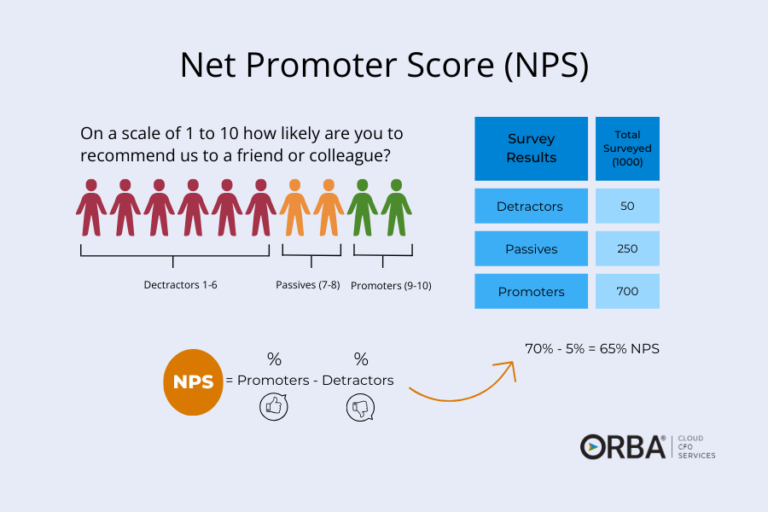The “Rule of 40” is a SaaS-specific metric to track your company’s financial position. It combines your profitability and growth into a measure of health or value for potential investors or buyers.
Put simply, if your growth rate and profit margin total more than 40%, then you can assume your SaaS company is in good financial health. Under 40 and there is room for improvement.
What’s covered in this blog:
- How to calculate the Rule of 40
- 3 Examples: Operating the Rule of 40 levers
- How to use the Rule of 40 for your SaaS company
How to Calculate the Rule of 40
For revenue growth rate, you should typically use either monthly recurring revenue (MRR) or annual recurring revenue (ARR). To calculate your profit margin, we would almost always recommend using earnings before interest, taxes, depreciation and amortization – or EBITDA – for an established, but growing SaaS company.
EBITDA = Net Income + Interest + Taxes + Depreciation + Amortization
Once you determine which ones are right for your company, add the two values together to conclude if you surpass the Rule of 40.
Growth % + Profit % = X
If x is greater than 40, you have met the threshold for the Rule of 40.
Again, if your two metrics total more than 40%, then your SaaS company is in a good financial position. Under 40 and there is room for improvement.
Essentially the Rule of 40 implies that even a company with no profits could be valuable if their rate of growth counterbalances the low profit margin. For example, an early-stage company that is growing quickly with 50% revenue, but has a negative –10% net profit margin, could still, in fact, be doing really well. Growth % + Profit % = X or, 50 –10 = 40%.
When we were growing early on, we were growing by 70-80%, but were still losing money. But, because we had that huge revenue growth, we were still attractive to a buyer. For early-stage companies, investors care much more about revenue growth than they do the bottom line because it shows demand. It is generally more attractive to build a business with consistently high revenue growth.
The Levers Operating the Rule of 40: 3 Examples
When you think of the two levers, revenue and profit, these are the two extremes or bookends. And in all scenarios, the Rule of 40 is relevant.

The Start-up Bookend
Example 1 : Clubhouse
A start-up bookend is a company with high revenue growth and low (or no) profitability. For example, Clubhouse, which in December of 2020, was valued at $1 billion and just in the last few months alone grew from a few thousand to over three million users. It experienced a revenue growth rate of 900% before it has even recorded profit, yet is undoubtedly meeting the Rule of 40. As of last week, Clubhouse has landed another Series C funding reportedly putting their valuation at $4 billion. Impressive. As it stands, Clubhouse is still invite-only, but plans to launch a subscription-model “sooner rather than later.”
The Clubhouse example clearly illustrates how showing revenue growth is more important than showing profit early on. But then it flips. Once your business is showing, say a few million, in revenue, then the importance switches to showing the profitability of your business model. Using our example above, the pressure will be on Clubhouse to show how it can monetize its growth. As of April 5th, Clubhouse is introducing what they are calling Payments: “as Clubhouse continues to scale, it’s important to us to align our business model with that of the creators—helping them make money and thrive on the platform.” Important to note that Clubhouse states that 100% of the payment at this time will go to the creator, none will go to Clubhouse.
The Stabilized Company Bookend
Example 2: Microsoft
The other extreme is a company with barely-growing or moderately growing revenue, but is highly profitable. A stabilized company bookend is optimizing operations and extracting profit where they can. An example might be Microsoft.
In 2020, Microsoft experienced a revenue growth of only 13.65% but showed a 45.98% for profit margin, so they are meeting the threshold for the Rule of 40 and mostly from the profit margin piece of business. Mind you, a 13.7% increase in revenue when you’re talking about billions of dollars is nothing to scoff at.
Example 3: Netflix
Using Netflix as a third example, they saw a 24% increase in revenue in 2020 and a 62% increase in profit margin from 2019 to 2020. Growth of 24% + Profit 62% = 86%. So you can see that Netflix definitely meet the Rule of 40. While Netflix may about a fifth of the size of Microsoft, they are growing faster and have a higher profit margin than Netflix. Impressive. Hands up if you had an increase in your monthly subscription fee to Netflix last year?
How to use the Rule of 40 for your SaaS company
Common questions we hear about the Rule of 40:
How often should you refer to the Rule of 40?
Don’t get caught up looking at it all the time. I would recommend twice a year. It can help drive direction, but it doesn’t serve a useful purpose to be looking at it more often than that.
How important is the Rule of 40?
You can begin referencing the Rule of 40 as you grow. Then later, when it becomes a valuable metric for your company and you are truly ready for this indicator, you will already be well-versed in calculating it.
A caveat about the Rule of 40: Do not let the short-term number get in the way of your long-term planning. For example, if our team just got through six months where we grew really quickly and signed a lot of clients, we might take some time to stabilize the business and hire some new staff to prepare us for the next wave of growth. If you are adding bodies, and not adding a lot of clients, it will negatively affect the Rule of 40. If you are stabilizing your company to scale in the near future, this doesn’t mean you are in a poor financial position.
Ultimately, the Rule of 40 is a useful metric for growing or stabilized SaaS companies, especially if you are considering selling your business. But, it is not the be-all and end-all in determining your financial health. As always, your KPIs only tell part of your financial narrative and it is one of the main reasons we recommend regularly reviewing your budget and forecasts.
Get in touch to see why we’re the best outsourced CFO for your accounting for SaaS needs.




